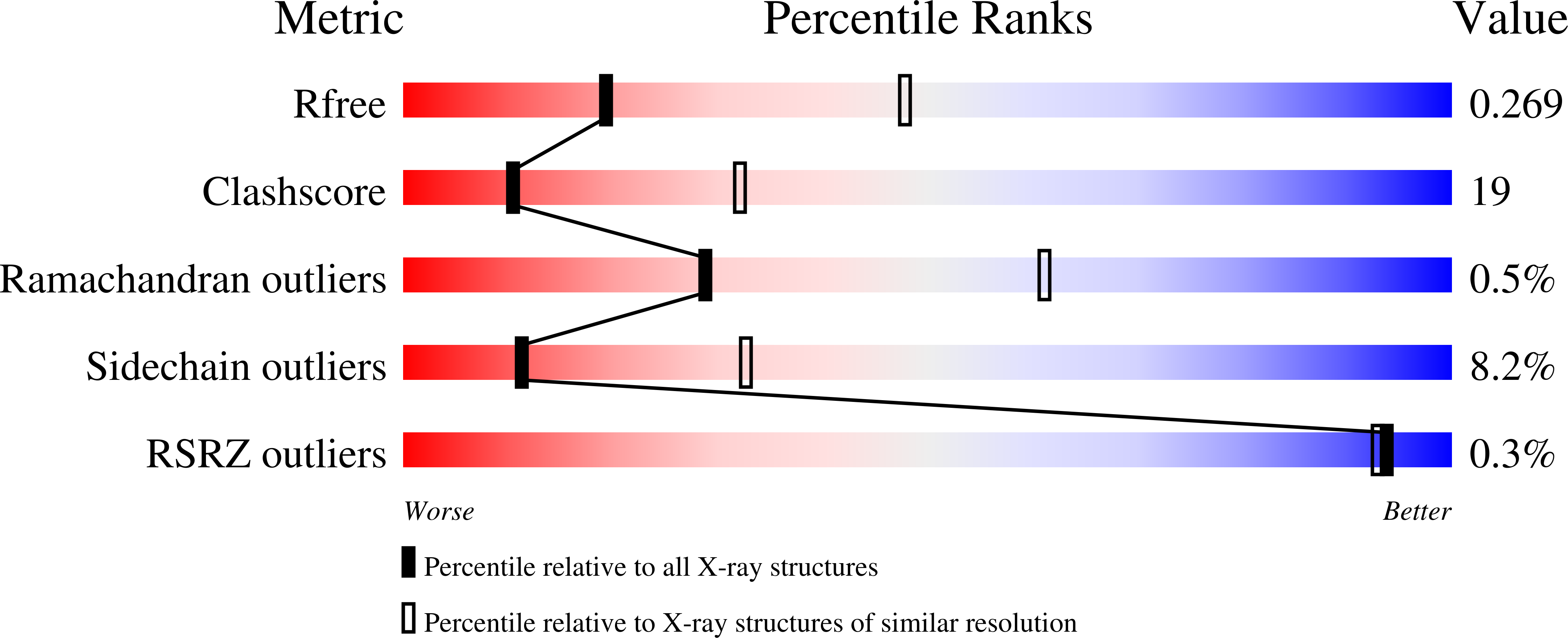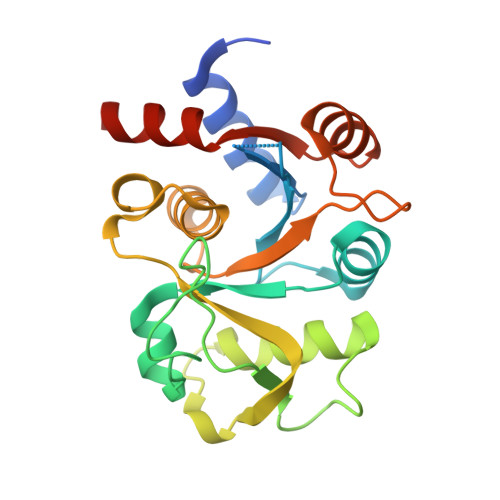Potential anti-bacterial drug target: structural characterization of 3,4-dihydroxy-2-butanone-4-phosphate synthase from Salmonella typhimurium LT2.
Kumar, P., Singh, M., Gautam, R., Karthikeyan, S.(2010) Proteins 78: 3292-3303
- PubMed: 20806221
- DOI: https://doi.org/10.1002/prot.22837
- Primary Citation of Related Structures:
3LQU, 3LRJ, 3LS6 - PubMed Abstract:
3,4-Dihydroxy-2-butanone-4-phosphate synthase (DHBPS) encoded by ribB gene is one of the first enzymes in riboflavin biosynthesis pathway and catalyzes the conversion of ribulose-5-phosphate (Ru5P) to 3,4-dihydroxy-2-butanone-4-phosphate and formate. DHBPS is an attractive target for developing anti-bacterial drugs as this enzyme is essential for pathogens, but absent in humans. The recombinant DHBPS enzyme of Salmonella requires magnesium ion for its activity and catalyzes the formation of 3,4-dihydroxy-2-butanone-4-phosphate from Ru5P at a rate of 199 nmol min(-1) mg(-1) with K(m) value of 116 μM at 37°C. Further, we have determined the crystal structures of Salmonella DHBPS in complex with sulfate, Ru5P and sulfate-zinc ion at a resolution of 2.80, 2.52, and 1.86 Å, respectively. Analysis of these crystal structures reveals that the acidic loop (residues 34-39) responsible for the acid-base catalysis is disordered in the absence of substrate or metal ion at the active site. Upon binding either substrate or sulfate and metal ions, the acidic loop becomes stabilized, adopts a closed conformation and interacts with the substrate. Our structure for the first time reveals that binding of substrate Ru5P alone is sufficient for the stabilization of the acidic active site loop into a closed conformation. In addition, the Glu38 residue from the acidic active site loop undergoes a conformational change upon Ru5P binding, which helps in positioning the second metal ion that stabilizes the Ru5P and the reaction intermediates. This is the first structural report of DHBPS in complex with either substrate or metal ion from any eubacteria.
Organizational Affiliation:
Institute of Microbial Technology, Council of Scientific and Industrial Research (CSIR), Sector 39-A, Chandigarh 160 036, India.















